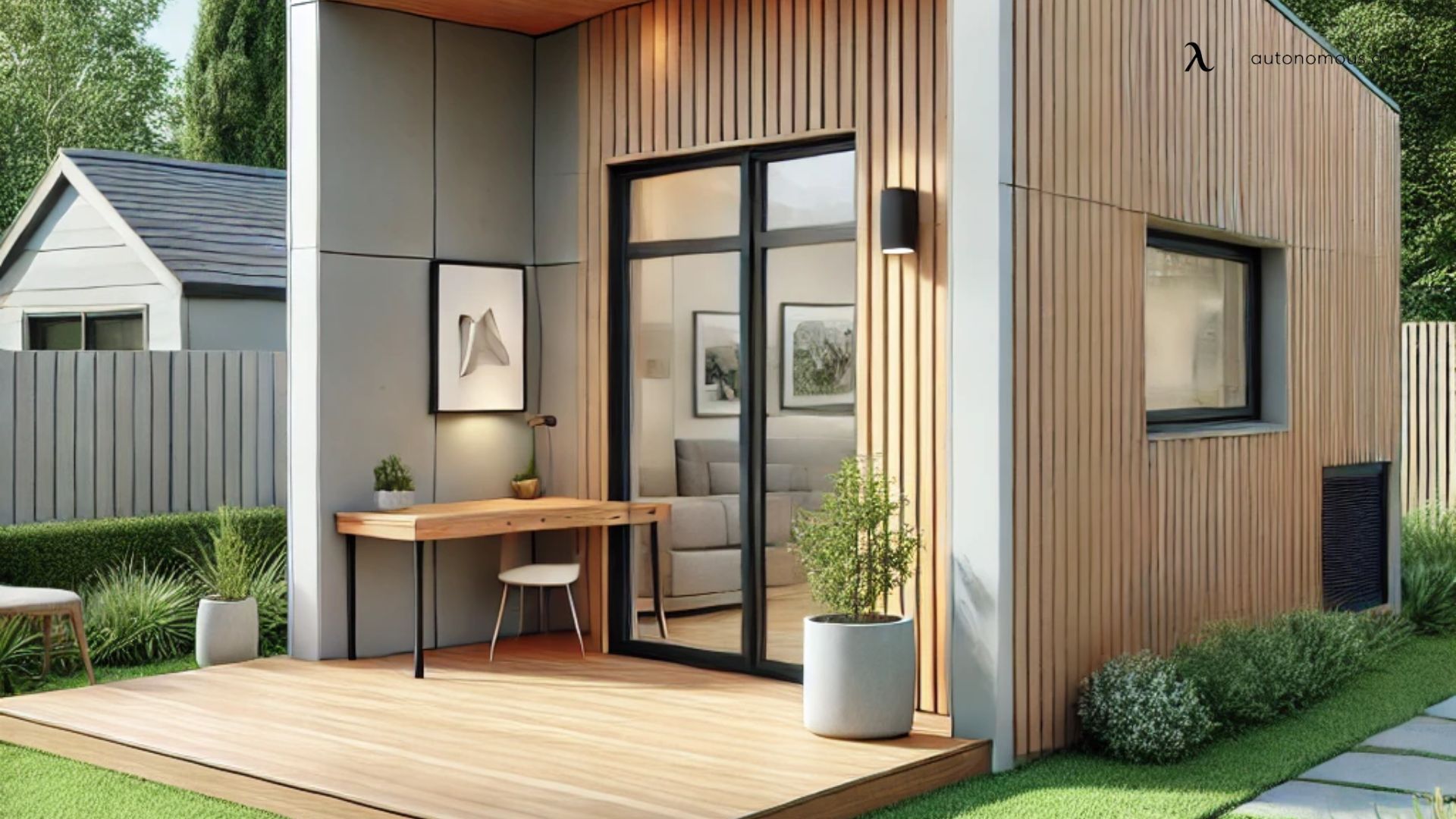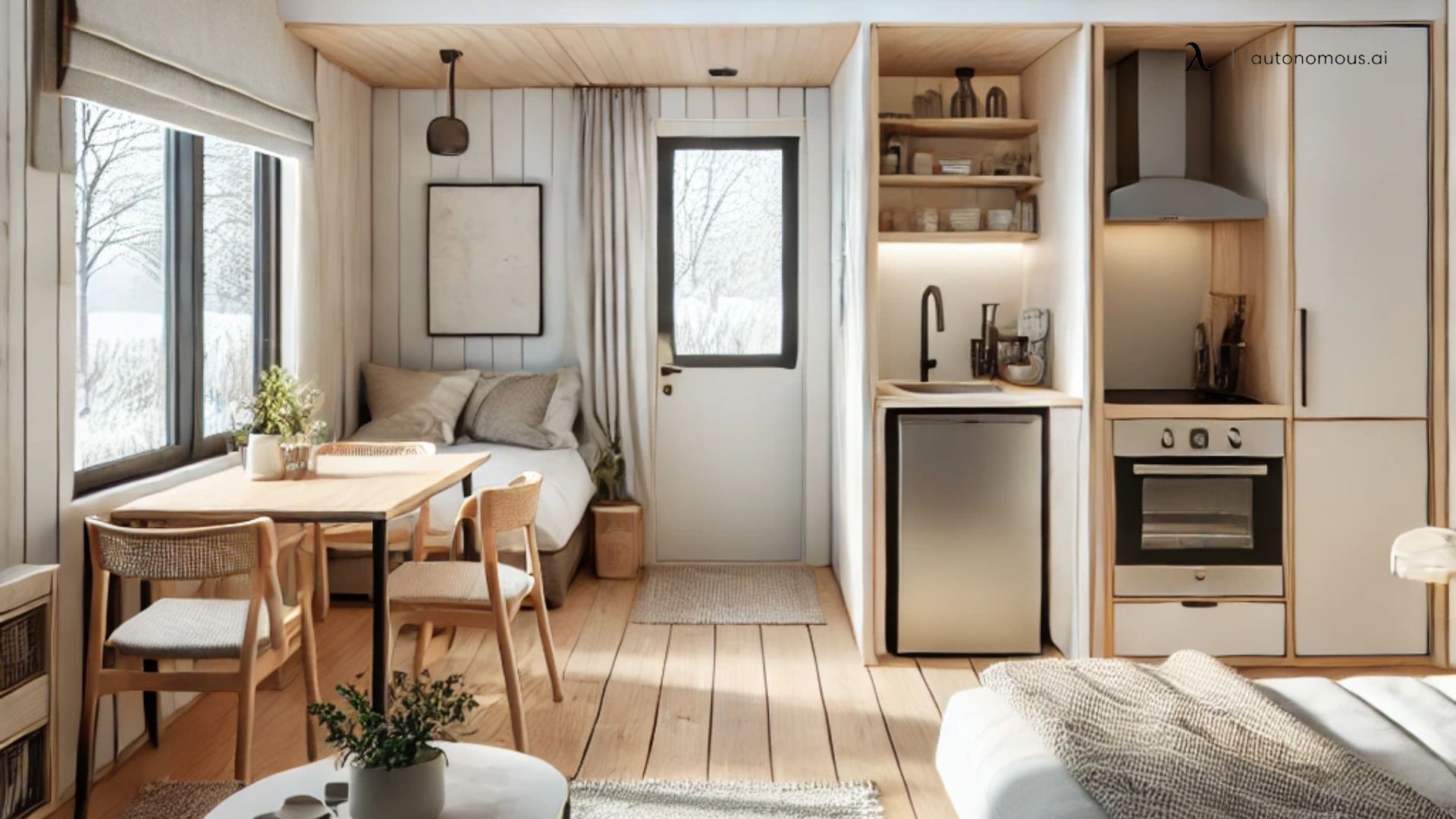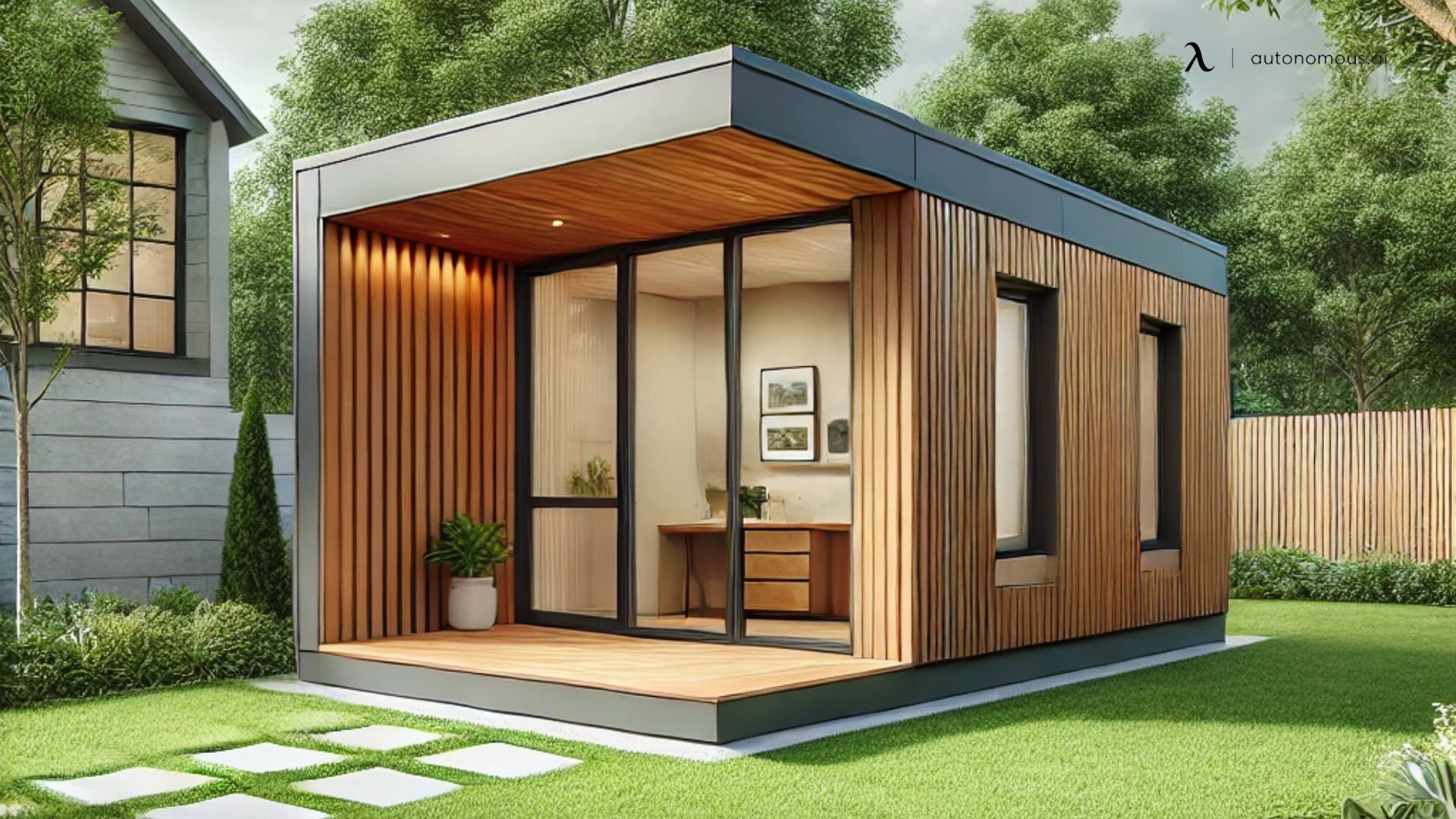
How to Install Water Systems for Tiny Houses?
Table of Contents
Living tiny doesn't have to mean sacrificing comfort. A well-designed water system is essential for a functional and enjoyable tiny house experience. This comprehensive guide will equip you with the knowledge to install a water system that's perfect for your miniature masterpiece, whether you're planning to hook up to the grid, go off-grid, or utilize alternative water sources.
Understanding the Plumbing System in Tiny Homes
In a tiny house, the plumbing system is usually more compact and often simplified compared to traditional homes. However, it still requires a good plan to ensure your water needs are met. Plumbing systems in tiny homes typically consist of three main parts: water supply, drainage, and waste management.
Typical Components
The components of a water system for a tiny house are similar to those found in conventional homes but scaled down for efficiency. The typical setup includes:
- Water Inlet: A connection that allows water to flow into the house.
- Pipes: Small, flexible pipes, often PEX or PVC, which carry water to different fixtures.
- Fixtures: Sinks, showers, and toilets are the most common water fixtures in tiny houses.
- Drainage: A drainage system is essential for removing wastewater from the house.
- Water Heater: A compact water heater provides hot water for showers, dishes, and other household needs.
Hot and Cold Access
Tiny houses require reliable access to both hot and cold water for everyday use. Hot water can be provided by electric or gas water heaters, with the choice depending on whether your tiny house is grid-connected or designed for an off-grid lifestyle. Coldwater access typically comes from an RV hookup or a water tank. For those seeking an eco-friendly solution, a solar powered ADU is an excellent option, offering the flexibility of powering essential systems, including water heaters, entirely with renewable energy while reducing reliance on traditional utilities. This sustainable setup is perfect for modern, environmentally conscious living.
Water Pressure Matters
Maintaining proper water pressure is important for the system to function effectively. Tiny houses typically use low-flow fixtures to conserve water and manage pressure better. Pressure regulators may be installed to ensure that the system operates at the correct pressure without straining the pipes.

RV Hookup and Grid Connections for Water Supply
Many tiny house dwellers connect their homes to existing water lines, especially when parked at RV parks or stationary locations. Using RV hookups simplifies water supply management. It allows for:
- Direct Water Line Connection: Similar to how an RV connects, the tiny house water system can be attached to an external water source.
- Water Pressure Regulation: When using city water or an RV park hookup, it's crucial to regulate water pressure to avoid damaging pipes or fixtures in the tiny house.
This option works best for tiny houses parked in one place or used as temporary homes.
For many tiny homeowners, securing a reliable water supply is essential, and two common options include RV hookups and grid connections.
RV Hookup Explained
An RV hookup provides a direct water line connection, designed for tiny houses on wheels that frequently relocate or stay at campgrounds and RV-friendly sites. The process is straightforward: a potable water hose is attached from the hookup point to the tiny house’s plumbing system, ensuring an uninterrupted flow of water as long as the RV park or campground provides the service.
Grid Connection Explained
For tiny houses that remain stationary, connecting to a municipal water grid is a reliable and robust option. Similar to traditional homes, a grid connection provides a continuous supply of clean water directly from city utilities.

Equipment Needed for RV and Grid Connections
Whether you opt for an RV hookup or grid connection, the right equipment is essential to ensure your tiny house water system operates smoothly and efficiently. Below is a list of necessary items:
- Drinking Water Hose: A high-quality hose specifically designed for drinking water is essential.
- Sewer Hose: Proper sewer hoses are necessary to handle wastewater.
- Pressure Regulator: Protect your tiny house's plumbing from excessive water pressure with a reliable pressure regulator.
- Heated Hoses (Optional): If you'll be camping in colder climates, heated hoses can prevent freezing and ensure a consistent water supply.
- Adapters (Optional): Depending on the specific hookup or grid you're connecting to, adapters may be needed to ensure compatibility.
Off-Grid Water Storage: Tanks and Pumps
Tiny and pod housing require efficient solutions for water storage and pressure management. Tanks store different types of water, while pumps maintain a steady supply throughout the system.
Types of Storage Tanks
Water storage is essential for tiny houses in the backyard, and different tanks serve specific purposes. Freshwater tanks hold clean water for daily needs like cooking, washing, and drinking. Greywater tanks collect used water from sinks, showers, and appliances, while blackwater tanks store waste from toilets. These tanks ensure that every type of water is managed appropriately.
Selecting the right tank size depends on the number of occupants and their daily water consumption. A family living in a tiny house will require larger tanks to avoid the inconvenience of frequent refilling, while a smaller household might opt for more compact tanks.
Role of Water Pumps
Pumps are essential for keeping water moving in a tiny home. They pressurize the system, ensuring that when you turn on a faucet or start the washing machine, water flows consistently. Without a pump, gravity alone wouldn’t provide enough pressure to deliver water to all fixtures. Pumps act as the driving force that ensures your water system operates smoothly.
Tank Size Considerations
The number of people living in the tiny house directly affects how large the water tanks should be. More residents lead to increased water usage from showers, dishes, and toilets, requiring larger tanks to meet demand. Additionally, daily water usage patterns play a role—if someone works from home or there’s a washing machine, a larger tank is often necessary to avoid frequent refills and interruptions in water supply.

Designing Efficient Plumbing Water Systems for Tiny Houses
After covering the role of tanks and pumps in water systems, let’s focus on plumbing design. We’ll examine ways to save space, choose durable materials, and ensure that everything is easily accessible for maintenance.
Space-Saving Strategies
Tiny homes require creative solutions when it comes to plumbing. With limited space, every square inch matters, so layouts need to be both practical and innovative. For example, a compact shower can fit into a corner, using foldable or sliding screens instead of bulky doors to maximize space.
Another smart approach is using multi-functional fixtures. A sink with a removable cover can double as a countertop when not in use. Running pipes through walls or beneath floors helps preserve valuable living space, ensuring a more open and uncluttered layout.
Using Modern Materials
In a tiny house, even small plumbing issues can create big problems, which is why selecting durable materials is crucial. PEX piping, for instance, is a popular choice because it’s flexible, resistant to freezing and bursting, and much easier to install than traditional copper pipes.
Modern plumbing materials are also designed to resist corrosion and buildup, ensuring a longer lifespan and better water quality. They’re lighter, making them ideal for mobile tiny houses, and their ease of installation is an added advantage in tight spaces.
Investing in quality fixtures made from stainless steel or brass can reduce the need for frequent replacements, ensuring your tiny home’s plumbing system stays in top condition for years.

Waterless Living: Off-Grid Options for Tiny Houses
Off-grid living poses unique challenges for water systems in tiny houses. Without access to municipal water lines, homeowners must get creative with water collection and usage.
- Rainwater Collection System for Tiny House: One popular option for off-grid living is a rainwater collection system. Rainwater is collected from the roof, filtered, and stored in tanks for household use. This setup can be combined with solar-powered pumps to supply water to sinks and showers.
- Water Storage Tanks: If you don't have access to rainwater, you can rely on water storage tanks that you refill manually. This requires careful planning to ensure you have enough water for daily needs.
- Solar-Powered Pumps: Solar-powered systems can keep your tiny house off-grid while providing water pressure for showers, sinks, and toilets.
By using sustainable water solutions, off-grid tiny homes can function independently and reduce their environmental impact.
Efficient Waste Handling: Options for Tiny Houses
Handling wastewater is a critical part of any plumbing system, and tiny houses or prefab ADUs are no exception. There are several options for managing waste in tiny homes.
- Composting Toilets: These toilets decompose waste into compost and require no water or septic system, making them ideal for off-grid homes.
- Greywater Systems: Greywater from sinks and showers can be filtered and reused for irrigation or other non-potable purposes. These systems reduce the amount of wastewater leaving your home.
- Connection to Septic or City Sewer: If your tiny house is stationary, you can connect it to a septic system or city sewer for waste disposal.

Collecting and Utilizing Alternative Water Sources
Tiny house dwellers can utilize various alternative water sources to increase self-sufficiency.
- Rainwater: As mentioned earlier, rainwater collection is a popular option. Filters can ensure the water is safe for household use, from dishwashing to bathing.
- Natural Water Sources: If your tiny house is located near a lake, stream, or well, you may be able to use these as your water source, though filtering is crucial to avoid contamination.
- DIY Water System for Cabin: Many tiny house owners also build DIY water systems, especially for cabins. These systems are often more rudimentary, involving manually filling tanks from external sources or using gravity-fed systems.
Conclusion
Installing a water system for your tiny house is a crucial part of making your home functional and livable. Whether you choose a simple RV hookup, an off-grid rainwater collection system for a tiny house, or a DIY water system for a cabin, planning your plumbing carefully ensures you’ll have reliable access to water wherever your tiny house is located. By designing an efficient system that meets your needs, you’ll enjoy a sustainable and comfortable lifestyle in your tiny home.
If you're interested in exploring other types of housing, check out this article on different types of housing. For those considering backyard spaces, here’s a guide on backyard accessory dwelling units. And if you're thinking about living off-grid, check out more about modular accessory dwelling units.
Spread the word
.svg)







